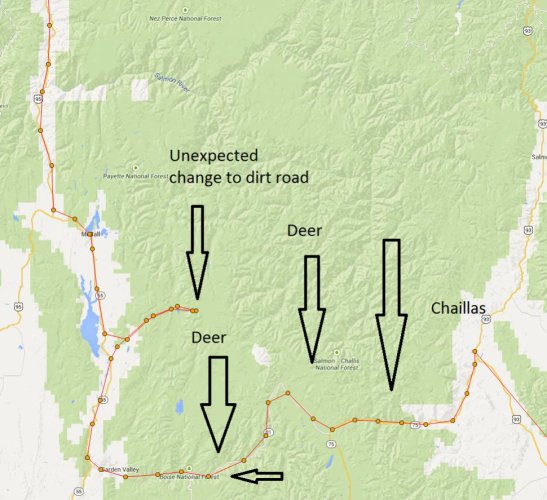rangerreece
RangerReece
Forensic investigation of this obituary
"He was 55, and had been on his way from a safety conference in California to Pittsburgh for his mother's 85th birthday, said his sister, Marcia Grodsky."
"...died Saturday on his bike in Fort Stockton, Texas, after being hit by a deer."
"Grodsky also wrote travel pieces for the magazine. He was doing one at the time of his death about buying a used motorcycle on eBay on the West Coast and riding it across the country to sell at the other end of his trip. It was a 1997 Kawasaki police bike," said Ms. Puglisi. "He was excited because it was unusual."
I re-read (and posted statements above) from the article as something about the article kept lingering in the back of my mind. In addition to the proficiency and recency requirements the army puts on it's aviators, army leadership also utilizes a very specific crew rest policy defined at each unit's level, proper rest is considered that important. Analyzing the disjointed article with few facts mentioned, (i.e. The deer strike time of day is missing, it may have occurred in the day or night, or paramount to the investigation the number of hours ridden/awake prior to the deer strike) I believe that the cause of the accident, or at least a major contributing factor was fatigue. If that is in fact the case in this instance, the message or "take away" might well be less about deer strikes and more about how accute or chronic fatigue can compromise even the safest, most talented motorcycle riders.
"He was 55, and had been on his way from a safety conference in California to Pittsburgh for his mother's 85th birthday, said his sister, Marcia Grodsky."
"...died Saturday on his bike in Fort Stockton, Texas, after being hit by a deer."
"Grodsky also wrote travel pieces for the magazine. He was doing one at the time of his death about buying a used motorcycle on eBay on the West Coast and riding it across the country to sell at the other end of his trip. It was a 1997 Kawasaki police bike," said Ms. Puglisi. "He was excited because it was unusual."
I re-read (and posted statements above) from the article as something about the article kept lingering in the back of my mind. In addition to the proficiency and recency requirements the army puts on it's aviators, army leadership also utilizes a very specific crew rest policy defined at each unit's level, proper rest is considered that important. Analyzing the disjointed article with few facts mentioned, (i.e. The deer strike time of day is missing, it may have occurred in the day or night, or paramount to the investigation the number of hours ridden/awake prior to the deer strike) I believe that the cause of the accident, or at least a major contributing factor was fatigue. If that is in fact the case in this instance, the message or "take away" might well be less about deer strikes and more about how accute or chronic fatigue can compromise even the safest, most talented motorcycle riders.






